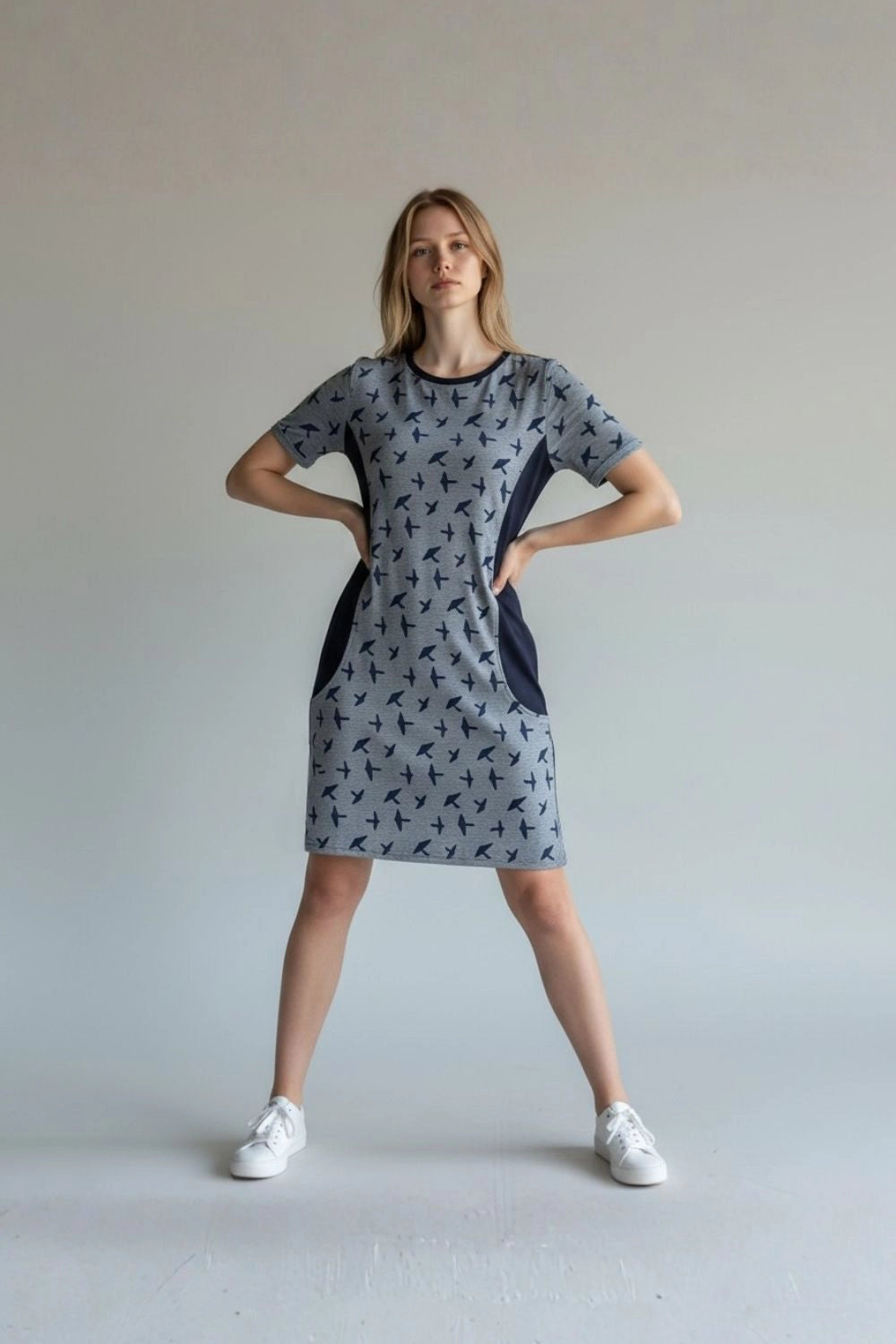
T-shirt hem: Overlock machine hack for perfect results (without coverlock)!
Are you faced with the dilemma of putting the finishing touches on your new shirt, but don't have a coverlock machine? The zigzag stitch on your sewing machine is out of the question? If only there was a way to use the overlock to sew a stylish hem onto your new shirt...
Don't worry, we present you a simple hem processing method with the overlock machine to create perfect hems for your jersey projects or stretch fabrics in no time.
Of course, you can also use this method to work with pieces made from cotton fabrics, for example. But since the finished seam has the great advantage of being elastic, it is particularly suitable for stretchy fabrics.
And here we go:
Hem processing steps:
1. Iron the seam allowance or hem allowance:
Iron the seam allowance lengthwise on the wrong side of the fabric. The cut edge does not need to be finished beforehand, as this will be done during the actual hem processing.

2. Fold the ironed hem outwards:
Take the piece and fold the ironed length over to the right side of the fabric, with the seam allowance cut on the folded edge.

3. Overlocking on the edge:
Sew along this edge with your overlock machine. Ideally, you won't cut anything off the new edge. If you do, it's okay, because the seam will be neatened straight away.

4. Fold back the hem and iron:
Fold the hem back down and place the seam allowance upwards into the fabric.

Iron over the new hem to make sure it is nice and smooth.

Complete!
Advantages of this method: When viewed from the right side of the fabric, neither unsightly zigzag seams nor "crumpled" straight seams are visible. This is particularly advantageous with jersey fabrics, where undesirable effects can quickly occur. The cut edge of the seam allowance does not have to be finished separately, and in the end, similar to a coverlock, you only need a single seam for a clean and effective result.

















